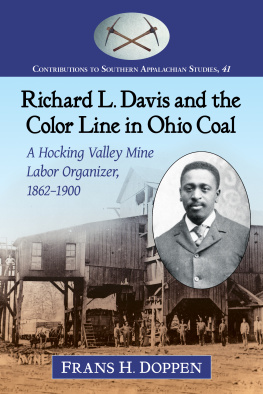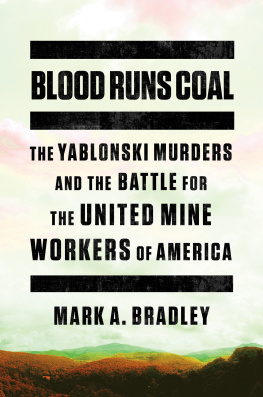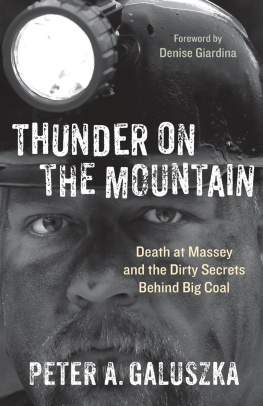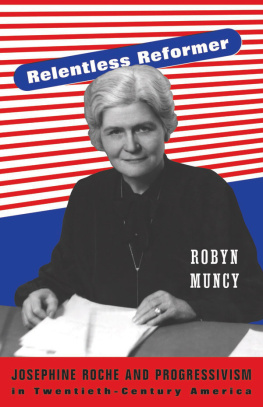
CONTRIBUTIONS TO SOUTHERN APPALACHIAN STUDIES
1Memoirs of Grassy Creek: Growing Up in the Mountains on the VirginiaNorth Carolina Line. Zetta Barker Hamby. 1998
2The Pond Mountain Chronicle: Self-Portrait of a Southern Appalachian Community. Edited by Leland R. Cooper and Mary Lee Cooper. 1998
3Traditional Musicians of the Central Blue Ridge: Old Time, Early Country, Folk and Bluegrass Label Recording Artists, with Discographies. Marty McGee. 2000
4W.R. Trivett, Appalachian Pictureman: Photographs of a Bygone Time. Ralph E. Lentz II. 2001
5The People of the New River: Oral Histories from the Ashe, Alleghany and Watauga Counties of North Carolina. Edited by Leland R. Cooper and Mary Lee Cooper. 2001
6John Fox, Jr., Appalachian Author. Bill York. 2003
7The Thistle and the Brier: Historical Links and Cultural Parallels Between Scotland and Appalachia. Richard Blaustein. 2003
8Tales from Sacred Wind: Coming of Age in Appalachia. The Cratis Williams Chronicles. Cratis D. Williams. Edited by David Cratis Williams and Patricia D. Beaver. 2003
9Willard Gayheart, Appalachian Artist. Willard Gayheart and Donia S. Eley. 2003
10The Forest City Lynching of 1900: Populism, Racism, and White Supremacy in Rutherford County, North Carolina. J. Timothy Cole. 2003
11The Brevard Rosenwald School: Black Education and Community Building in a Southern Appalachian Town, 19201966. Betty J. Reed. 2004
12The Bristol Sessions: Writings About the Big Bang of Country Music. Edited by Charles K. Wolfe and Ted Olson. 2005
13Community and Change in the North Carolina Mountains: Oral Histories and Profiles of People from Western Watauga County. Compiled by Nannie Greene and Catherine Stokes Sheppard. 2006
14Ashe County: A History; A New Edition. Arthur Lloyd Fletcher. 2009 [2006]
15The New River Controversy; A New Edition. Thomas J. Schoenbaum. Epilogue by R. Seth Woodard. 2007
16The Blue Ridge Parkway by Foot: A Park Rangers Memoir. Tim Pegram. 2007
17James Still: Critical Essays on the Dean of Appalachian Literature. Edited by Ted Olson and Kathy H. Olson. 2008
18Owsley County, Kentucky, and the Perpetuation of Poverty. John R. Burch, Jr. 2008
19Asheville: A History. Nan K. Chase. 2007
20Southern Appalachian Poetry: An Anthology of Works by 37 Poets. Edited by Marita Garin. 2008
21Ball, Bat and Bitumen: A History of Coalfield Baseball in the Appalachian South. L.M. Sutter. 2009
22The Frontier Nursing Service: Americas First Rural Nurse-Midwife Service and School. Marie Bartlett. 2009
23James Still in Interviews, Oral Histories and Memoirs. Edited by Ted Olson. 2009
24The Millstone Quarries of Powell County, Kentucky. Charles D. Hockensmith. 2009
25The Bibliography of Appalachia: More Than 4,700 Books, Articles, Monographs and Dissertations, Topically Arranged and Indexed. Compiled by John R. Burch, Jr. 2009
26Appalachian Childrens Literature: An Annotated Bibliography. Compiled by Roberta Teague Herrin and Sheila Quinn Oliver. 2010
27Southern Appalachian Storytellers: Interviews with Sixteen Keepersof the Oral Tradition. Edited by Saundra Gerrell Kelley. 2010
28Southern West Virginia and the Struggle for Modernity. Christopher Dorsey. 2011
29George Scarbrough, Appalachian Poet: A Biographical and Literary Study with Unpublished Writings. Randy Mackin. 2011
30The Water-Powered Mills of Floyd County, Virginia: Illustrated Histories, 17702010. Franklin F. Webb and Ricky L. Cox. 2012
31School Segregation in Western North Carolina: A History, 1860s1970s. Betty Jamerson Reed. 2011
32The Ravenscroft School in Asheville: A History of the Institution and Its People and Buildings. Dale Wayne Slusser. 2014
33The Ore Knob Mine Murders: The Crimes, the Investigation and the Trials. Rose M. Haynes. 2013
34New Art of Willard Gayheart. Willard Gayheart and Donia S. Eley. 2014
35Public Health in Appalachia: Essays from the Clinic and the Field. Edited by Wendy Welch. 2014
36The Rhetoric of Appalachian Identity. Todd Snyder. 2014
37African American and Cherokee Nurses in Appalachia: A History, 19001965. Phoebe Ann Pollitt. 2015
38A Hospital for Ashe County: Four Generations of Appalachian Community Health Care. Janet C. Pittard. 2015
39Dwight Diller: West Virginia Mountain Musician. Lewis M. Stern. 2016
40The Brown Mountain Lights: History, Science and Human Nature Explain an Appalachian Mystery. Wade Edward Speer. 2016
41Richard L. Davis and the Color Line in Ohio Coal: A Hocking Valley Mine Labor Organizer, 18621900. Frans H. Doppen. 2016
42The Silent Appalachian: Wordless Mountaineers in Fiction, Film and Television. Vicki Collins. 2017
Richard L. Davis and the Color Line in Ohio Coal
A Hocking Valley Mine Labor Organizer, 18621900
Frans H. Doppen
CONTRIBUTIONS TO SOUTHERN APPALACHIAN STUDIES,

McFarland & Company, Inc., Publishers
Jefferson, North Carolina
LIBRARY OF CONGRESS CATALOGUING DATA ARE AVAILABLE
e-ISBN: 978-1-4766-2667-3
2016 Frans H. Doppen. All rights reserved
No part of this book may be reproduced or transmitted in any form or by any means, electronic or mechanical, including photocopying or recording, or by any information storage and retrieval system, without permission in writing from the publisher.
Front cover: top pickaxes 2016 iStock; inset Richard L. Davis, National Executive Board, United Mine Workers of America, 1897 (courtesy Ronald L. Lewis); background photograph of Mine #268 tipple in Rendville, Ohio (courtesy Little Cities of Black Diamonds Archives)
McFarland & Company, Inc., Publishers
Box 611, Jefferson, North Carolina 28640
www.mcfarlandpub.com
Preface
This book is about the remarkable life of Richard L. Davis. Born in Virginia, he spent most of his adult life in Rendville, a community located on Sunday Creek in the Hocking Valley of southeast Ohio. Here, in a microregion known as the Little Cities of Black Diamonds, which encompasses Athens, Hocking, Perry and Morgan counties, Davis became an ardent mine labor organizer, most notably among his colored brothers. Soon active in the nascent mine labor movement, he rose to prominence by being twice elected to serve on the National Executive Board of the United Mine Workers of America. During the last decade of the nineteenth century, his was a regular voice in letters to the editor. In this book I briefly review prior research that has been conducted on Richard L. Davis after which I proceed to chronicle his life as much as possible in his own voice and those of his contemporaries. There are many lessons to be learned from Davis life that hold meaning for us today. I leave it up to you, the reader, until the final chapter to draw your own conclusions and analogies from his letters and experiences. It is my sincere hope his letters will inspire you as much as they have inspired me and those I have met along the way while conducting the research for and writing this book.
The following is the outcome of a serendipitous encounter I had when exploring southeast Ohio shortly after accepting a faculty position in what is now the Patton College of Education at Ohio University in Athens. During my 19 years as a middle and high school social studies teacher in north central Florida, I came to appreciate the importance of knowing the history of ones local school community. I organized field trips for my students to nearby small towns and engaged local historians to conduct walking tours to share their towns history. I quickly learned that my students loved the experience. Rather than learning history out of one of the many generic textbooks, they loved being able to make connections that had personal meaning to them. I took them to obscure and often largely forgotten cemeteries to visit not only, for example, the grave marker in Rochelle of Madison Starke Perry, Floridas fourth governor who led the state into the Confederacy, but also unknown markers of individuals who had lived in the area, including soldiers from various wars referenced in their history textbooks and early immigrants to northern Florida from the Carolinas. Ill never forget when one of my students discovered a stone marker overgrown with grass only to find out that a young woman had been buried there in the late eighteenth century. As a result, as a social studies teacher, I have made it my business to emphasize to student teachers the importance of getting to know the local school community in which their students live.
Next page









